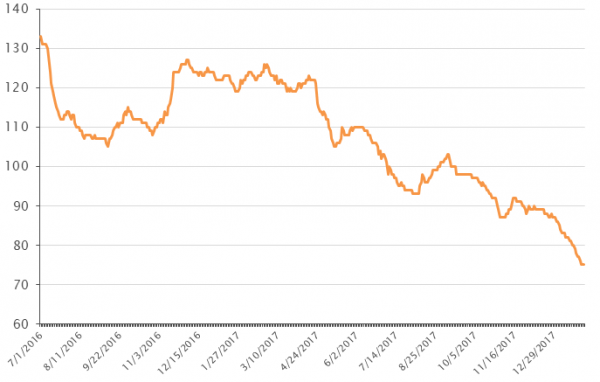In the US, growth momentum has softened, the threat of trade tensions persists and the drop in ediumterm inflation expectations to the lowest level in three years is a worrying development in the context of low unemployment. As a result, the Fed turned very dovish and signalled a strong bias towards lower rates, with the market expecting two to three rate cuts over the next twelve months.
Unlike the Fed, the ECB has not had the chance to raise short-term rates in the past few years, and the deposit rate remains negative at -0.4% (see: 1month in 10snapshots for details). Still, last month at Sintra, Mario Draghi emphasised further rate cuts and a resumption of asset purchases through the CSPP are viable options, given the downside risks weighing on growth and inflation.
The original CSPP was initiated in June 2016, by extending the universe of eligible assets for the purchasing programme to include investment grade euro-denominated bonds issued by non-bank corporations in the eurozone. The purpose of this was to strengthen the pass-through of asset purchases to the real economy. It resulted in the tightening of investment grade spreads, from 140bps to the lowest level ever of 74bps at the start of 2018 (chart 1).


